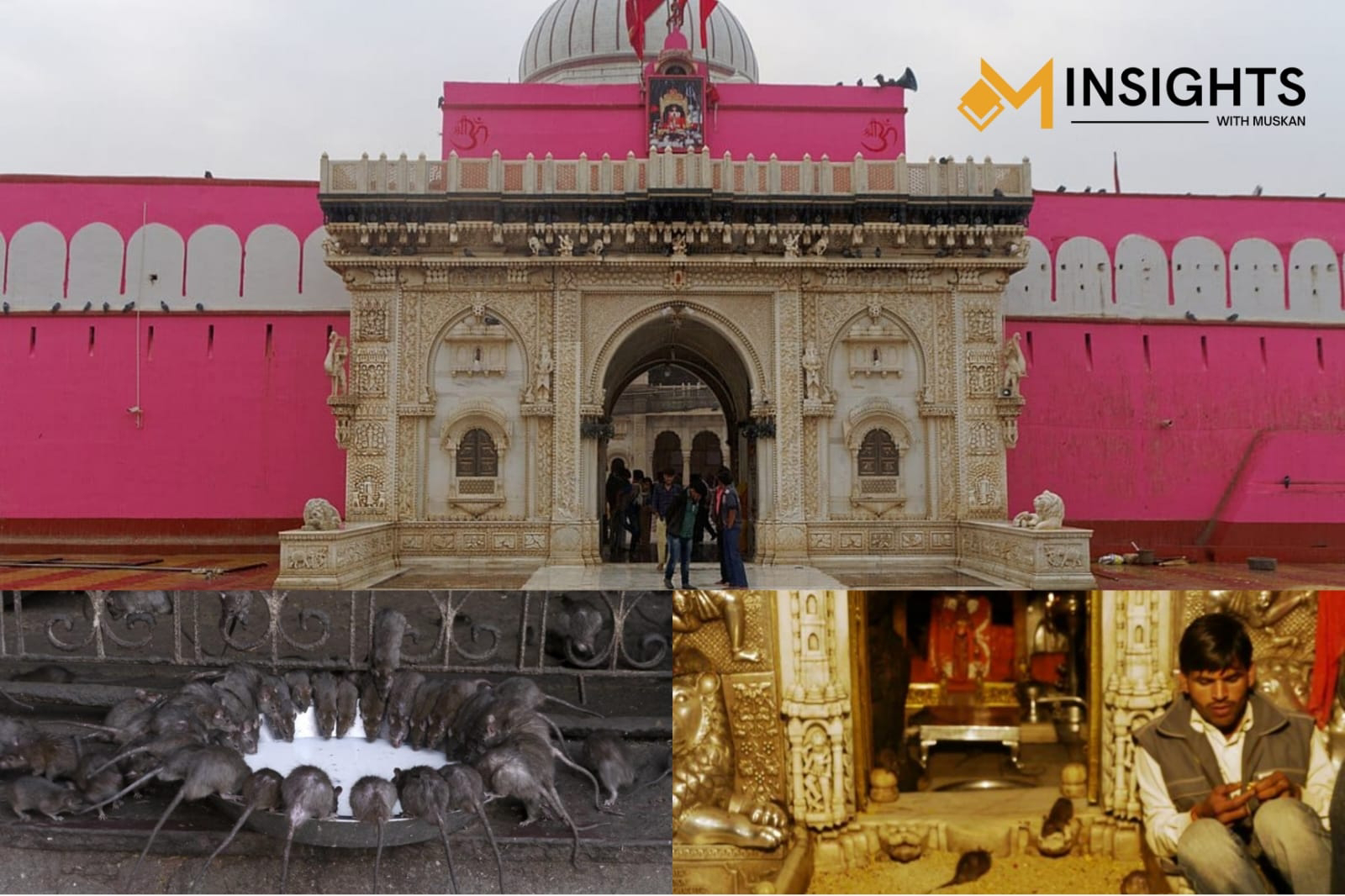Rajasthan is a state in India that is known for its rich culture, heritage, and diversity. It has many attractions that draw tourists from all over the world, such as forts, palaces, lakes, deserts, and wildlife. But there is one place in Rajasthan that stands out for its uniqueness and fascination: the Karni Mata Temple, also known as the Temple of Rats.
What is the Karni Mata Temple?
The Karni Mata Temple is a Hindu temple dedicated to Karni Mata, a 15th-century mystic and an incarnation of the goddess Durga. The temple is located in Deshnoke, a small town about 30 km from Bikaner, in Rajasthan. The temple is famous for being home to over 20,000 black rats, which are considered sacred and worshipped by the devotees.
Why are the rats sacred?
According to legend, Karni Mata once tried to revive the son of a storyteller who had died, but was told by Yama, the god of death, that he had already been reincarnated. Karni Mata then made a deal with Yama that all her followers would be reborn as rats until they could be reincarnated as humans again. Thus, the rats are believed to be the descendants of Karni Mata’s followers and her own sons.
The rats are called kabbas, which means children in the local dialect. They are treated with utmost respect and care by the temple staff and the pilgrims. They are fed with milk, grains, fruits, and sweets. They are also given water from a large silver bowl that was donated by Maharaja Ganga Singh of Bikaner in the early 20th century.
The rats are free to roam around the temple premises and interact with the visitors. It is considered a blessing to see them, touch them, or have them run over your feet. It is also auspicious to eat or drink the food and water that has been nibbled by the rats, as it is believed to bring good luck and fortune. The most lucky thing, however, is to spot a white rat among the thousands of black ones. The white rats are rare and are regarded as the manifestations of Karni Mata herself and her four sons.
What is the history and architecture of the temple?
The original temple was built in the 15th century by Karni Mata’s followers, but the current structure dates back to the early 20th century. It was commissioned by Maharaja Ganga Singh of Bikaner, who was a devotee of Karni Mata. The temple is built in the Mughal style, with a marble façade and silver doors. The doors are carved with scenes from Karni Mata’s life and legends.
The main shrine of the temple houses a marble idol of Karni Mata, adorned with a crown and a garland of flowers. The idol is surrounded by rats, who are often seen crawling on it or sleeping beside it. The shrine is visited by thousands of pilgrims every day, who offer prayers, flowers, coconuts, and sweets to the goddess and her rats.
The temple also has a museum that displays the history and culture of the temple and its devotees. It showcases various artifacts, photographs, paintings, and documents related to Karni Mata and her miracles.
How to visit the temple?
The temple is open every day from 4:30 am to 10:00 pm. There is no entry fee, but you have to pay a small amount if you want to take photos or videos inside the temple. You also have to remove your shoes before entering the temple, as it is a sign of respect and cleanliness.
The best time to visit the temple is during the festivals of Navratri and Dussehra, which are celebrated in March-April and September-October respectively. These are the times when Karni Mata is believed to visit her temple and bless her devotees. The temple is decorated with lights, flowers, and flags, and special ceremonies and rituals are performed. The rats are also more active and visible during these times.
The temple can be reached by road from Bikaner, which is well-connected by bus, train, and air from other major cities in India. You can also hire a taxi or a rickshaw from Bikaner to Deshnoke. The journey takes about an hour.
Should you visit the temple?
The temple of rats is not for everyone. Some people might find it disgusting, scary, or offensive to see thousands of rats in a religious place. Some might also be concerned about the hygiene and health risks of being in contact with the rodents. However, if you are open-minded, curious, and respectful, you might find the temple to be a fascinating and unique place to visit. You might also learn something new about the culture and beliefs of Rajasthan and India.
The temple of rats is a place where faith, tradition, and nature coexist in harmony. It is a place where humans and animals share a bond of love and reverence. It is a place where you can witness the power and mystery of the divine. It is a place that will challenge your perceptions and expectations, and maybe even change them.
If you are looking for a different and memorable experience in Rajasthan, the temple of rats might be the perfect destination for you.






0 Comments